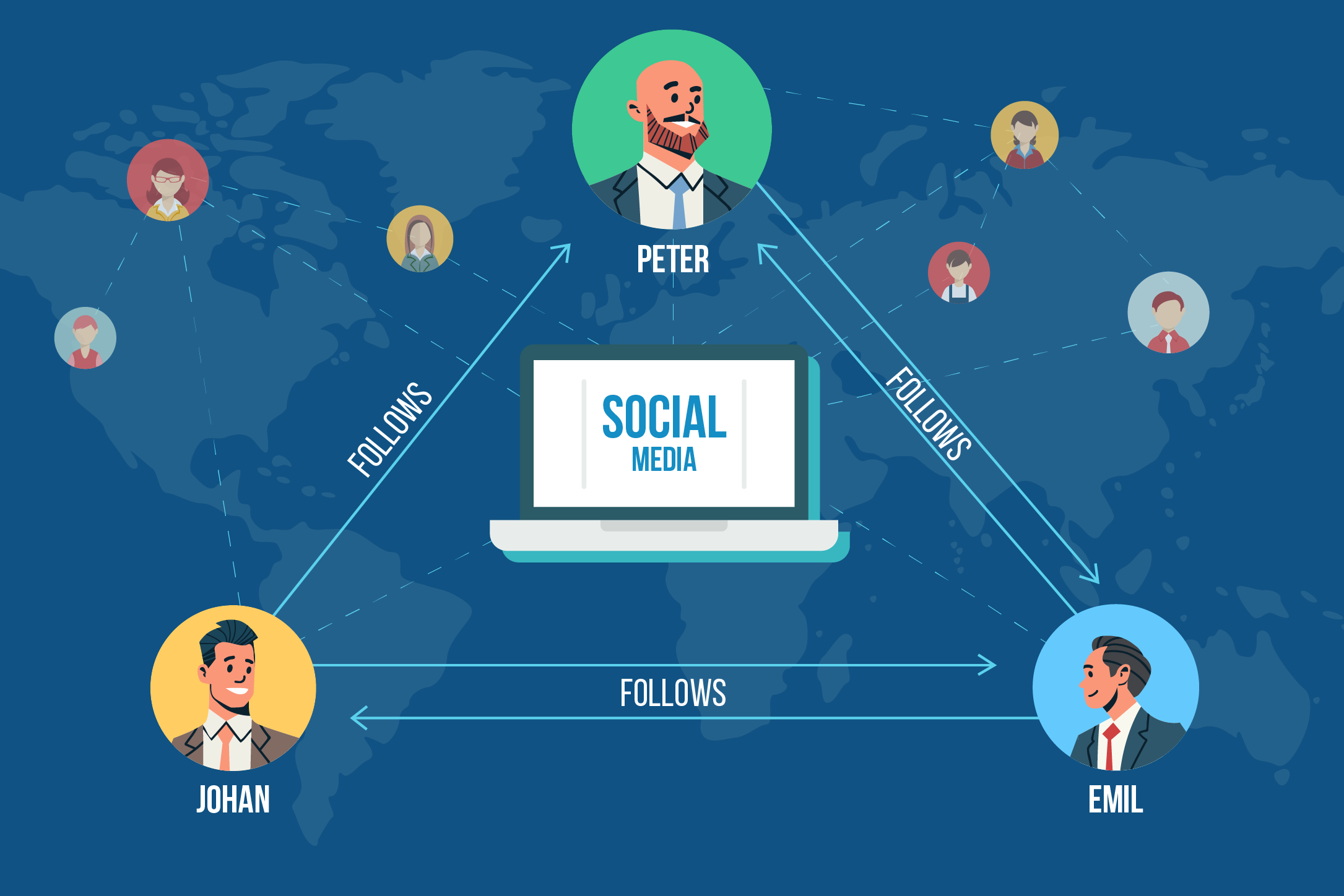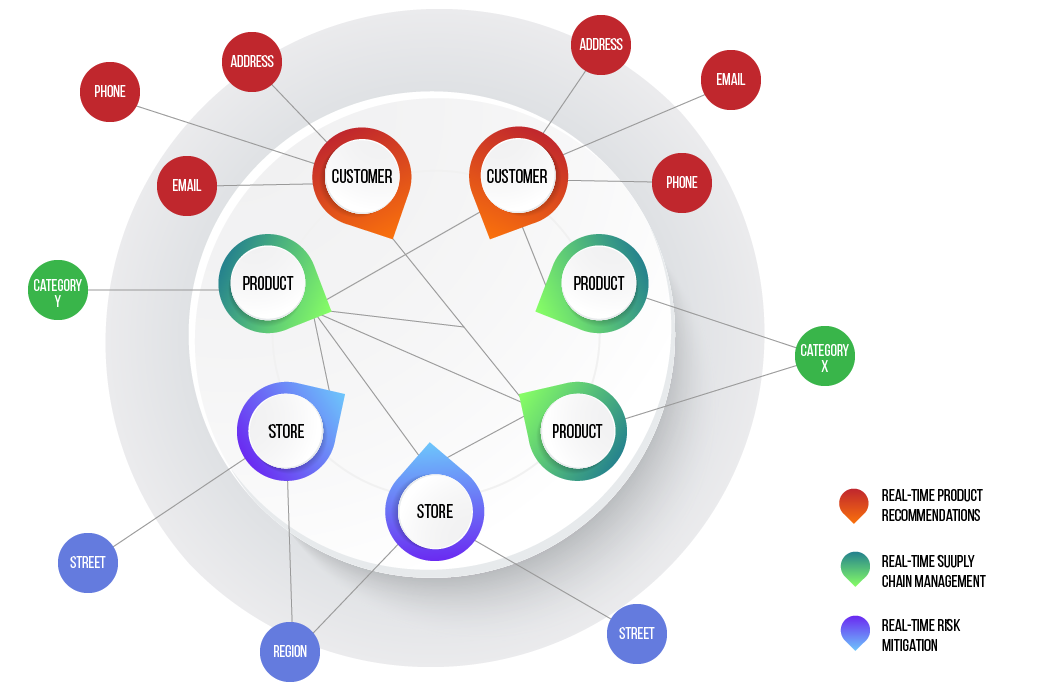The Power of Graph Technology


The emergence of graph technology brought major changes to the IT landscape pertaining to areas of metadata and asset management, data governance and analytics due to its unique and empowering characteristics.
Apparently, graph technology being theoretically superior allows you to take a step further in storing immense datasets that encompass and interlock the connections between unstructured data points, thus, enabling the creation of a network of data.
In regard to specific areas of implementation of graph database technology and its influence, it can be stated that graph technology definitely became a game-changer for online commerce, social media platforms and cybersecurity as it made a big impact on route optimization, recommendations, as well as detection of money laundering and fraud cases.
Graph technology trend: from emergence to dominance
Graph technology and graph analytics, in particular, take top position in the list of technology trends that will surely become mainstream in the predictable future due to obvious competitive advantages that businesses get once they deploy graph processing.
What stands behind the growing popularity of graph database technology is the graph capabilities of presenting and retrieving information so that relationships are easily seen.
It enabled the opportunity of ‘marrying’ graph technology and AI because, with a diversity of existing model contextual optimization options, graph technologies open access not only to building optimal AI solutions but their prompt delivery to various recipients.
Graph Databases
A query on the graph is initiated with a node fetching all edges of a certain type for that node. Therefore, graphs consisting of nodes and edges, objects and associations, with a respective list of attributes, operate on a simple model outperforming any other one by speed and precision.
Relational databases use a ledger-style structure, which means setting up data interrelations based on preconditions and constraints. The table structure works well for constraining input and locking entries. Graphs use more complex structures, which greatly facilitate the process of storing and retrieving varied data.
With applying multi-stage levels for data clustering like centrality, location detection, pathfinding, link prediction, and identifying similarities, graph database technology proved to be a trend demonstrating the steady increase when it comes to embracing areas of implementation. The multiple research and statistical data confirm consistently rising tendency of this trend as shown below.

Graph Analytics
In graph analytics, there are no tables and schemas but there are different ways of searching through application of various analytical techniques like following chains and identifying certain patterns that enable deep exploration of the complex, linear relationships between points.
Graph analytics is not aimed at replacing the traditional relational database but rather can be regarded as a valuable addition, especially in cases of the ‘forbidden queries’ demanding excessive time consumption on processing and searching for the answer.
With 300% revenue increase reported by TigerGraph, a leading graph analytics platform, the application of graph processing and graph DBMSs will continue to expand and contribute to further digital transformation of the global business.
Knowledge graph technology
Actually, knowledge graph technology as a model based on intelligent machine learning algorithms and the ability of combining disparate silos of data, and, thus, enabling intuitive search results has been in our everyday routines for a while (with voice assistants, purchase recommendations, etc.).
Because of big data proliferation, knowledge engineering took a spotlight in research and development pertaining to almost all business domains.
Data-centric approach to knowledge representation can help scale up any business by providing simple expressions of complex constructs and offering the optimal query execution. Implementing knowledge-based extraction proved to be successful for specific areas in business analytics, biomedicine, healthcare.
NASA pursuing to manage complex processing workflows and enhance its success when performing the most ambitious projects actively employ graph visualization for better knowledge management and streaming data analysis into concrete insights. Knowledge graph technology helps NASA overcome the limitations imposed by basic search and apply topic modeling for retrieving information, which proved to be effective when dealing with complex domains.
Personalisation
Implementing the graph technology leads to turning data into meaningful and actionable insights and ‘smartifying’ processes in terms of offering the optimal choice to potential consumers.
Graph databases stage complex relationships as the focal point, which makes this model more efficient when it comes to the necessity to speed up complex queries and meet the requirement of agility as well as catering to specific needs typical of the digital economy.
Innovative approach implemented by Amazon, ignited other market players to pave new ways of providing customers with personified prompts to increase clients’ engagement. Hence, enabling personified recommendations based on data-driven analysis transforms recommendation engines.
In particular, with graph database technology, building personified recommendations translates into improved customer experience, which results in guaranteed customer satisfaction.
Overall, personalisation seems a promising direction of development in graph technology that can be expected to advance further.
Application of graph technology
Graphs presenting non-linear data structures in connected nodes that can directly or indirectly fetch related information, find application in plenitude of practical areas as they show much wider functionality and more accelerated interaction compared to relational databases. In particular, graph database platforms are implemented on:
Social media
They use graph technology as the primary mechanism of people’s connection within the network: the disconnected data silos of large enterprises such as Facebook, Twitter, LinkedIn are combined so that users could get recommendations on whom and what they might be linked to promptly. The graph search bar once filled in with a query will show the list of suggestions whether it concerns the person or any content of interest.

Twitter users represented in a graph database model
Job vacancies sites
The websites for job seekers like Glassdoor and CareerBuilder implemented graph technology for providing their users with instant access to string search in regards of the location, company, industry, years of experience, salary, options for remote employment, etc.
With graph database technology, job search is approached differently as it lets you tap into accurate information and comprehensive database relevant to candidates’ expectations. With graph technology, the algorithm performs detailed search in milliseconds and delivers users rich structured data.
Dating apps
Not surprisingly, graph technology manifested in dating service by offering recommendations of possible match based on profiles compatibility that the algorithm calculates with pairing the similar answers to questions that applicants agree to submit.
Dating platforms process expanded customer bases to identify potentially compatible couples with graphs on location, hobbies, social and marital status, etc. As a result, dating sites achieve high performance by getting the best out of their data.
HOW TO CREATE A DATING APP
Retail
These days, almost all the online retailers make recommendations (presented as suggestions of adding items to customers’ basket). This way, a consumer might feel interested and get more engaged in making a purchase.
In addition, businesses might benefit from applying graph technology for predicting the customer journey in terms of assessing their engagement, which eventually projects on the business profitability.

A retailer’s entire inventory, supply chain, customer data and other systems are all connected in graph databases
Delivering precision medicine solutions
An intuitive graph database applies unconstrained analysis and turns complex constructs into fast graph indexes producing the immediate response within any dataset regardless of its size.
The fast reply to any query available on graph applications conveys high quality and accuracy, which makes a perfect foundation for encompassing graph databases into healthcare. By integrating and normalising the complex heterogeneous data, doctors can create knowledge graphs and deliver precision medicine solutions in terms of diagnosis and definition of the prevention measures.
Fraud detection and cybersecurity protection service
The global system of financial interactions often implies monitoring traffic across the network of irregularly connected computers.
With applying graph technologies, and graph analytics in particular, it gets easier to spot suspiciously looking patterns and indicate bad actors signalling of the danger of cyber-attacks.
Hence, implementing graph technology in banking systems and international financial services may decrease the cases of fraud and money laundering by providing reliable cybersecurity.
Concluding Thought
Nowadays, establishing relationships in the form of individuals’ interaction as well as various types of cooperation between entities defines the dynamics of the global IT-related landscape, which means aggregating more data. Therefore, the modern agenda implies active search for optimized data storage, processing and analysis for introducing insights that can be meaningful for the global market in general and all kinds of communities in particular.
Graph database at its core enables search for complex patterns in a huge amount of data and provides rapidly delivered results that, in its turn, lets us interact with database on a new level by modifying queries and security fashion for further accelerating the cognitive discoveries pertaining to diverse practical fields of application.
Due to the fact that anything or anyone can be turned into a data point (e.g., a task, an issue, a test, a company, or a person) of the graph enabling the viewer to see the interlocked relationships among data points, graph technology will uptake and grow into predictably more dynamic and connected world.
Also read:Top Data Analytics Trends 2022
Build your ideal
software today

